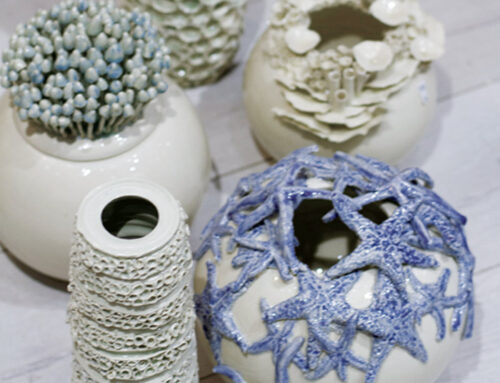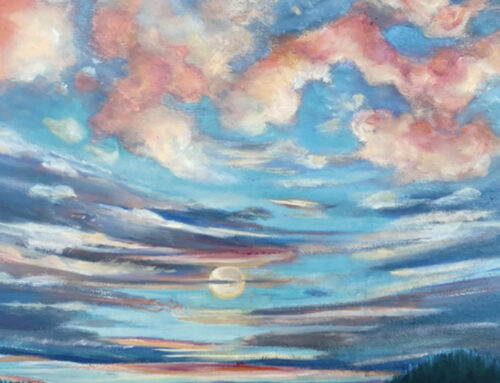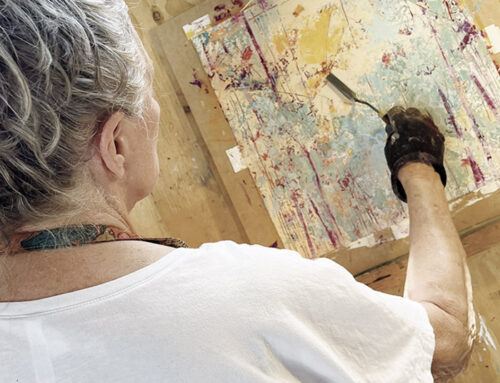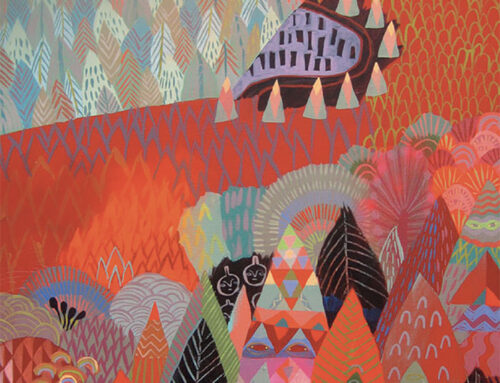Nothing transforms like fire. The ancients knew it; every inch of the earth reflects it. Contemporary potters continue to use fire in an age-old process that is reverent, communal, and mysterious. At Geopia Gallery and Gardens, sculptor and potter Pia Sillem collaborates with like-minded artists to finish their work in a traditional wood-fired kiln that was hand-built by four of them: Sillem, Jinny Whitehead, Rob Robb, and Jan Lovewell.
Firing is a long, labour-intensive, celebratory process that takes about 50 hours from start to finish. Sillem explains that working as a group makes the work easier, safer, and fun.
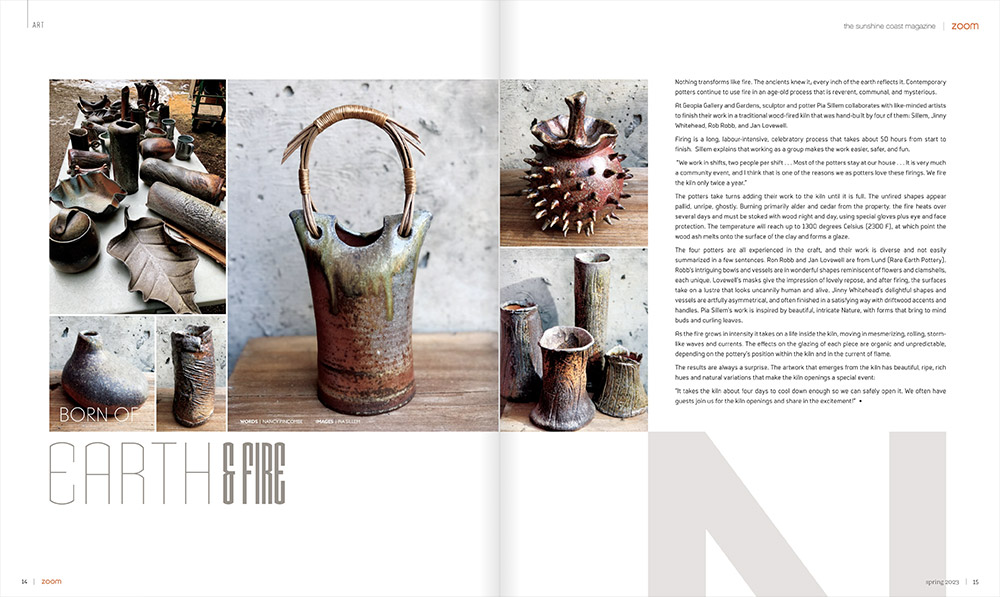
“We work in shifts, two people per shift . . . Most of the potters stay at our house . . . It is very much a community event, and I think that is one of the reasons we as potters love these firings. We fire the kiln only twice a year.”
The potters take turns adding their work to the kiln until it is full. The unfired shapes appear pallid, unripe, ghostly. Burning primarily alder and cedar from the property, the fire heats over several days and must be stoked with wood night and day, using special gloves plus eye and face protection. The temperature will reach up to 1300 degrees Celsius (2300 F), at which point the wood ash melts onto the surface of the clay and forms a glaze.
The four potters are all experienced in the craft, and their work is diverse and not easily summarized in a few sentences. Ron Robb and Jan Lovewell are from Lund (Rare Earth Pottery). Robb’s intriguing bowls and vessels are in wonderful shapes reminiscent of flowers and clamshells, each unique. Lovewell’s masks give the impression of lovely repose, and after firing, the surfaces take on a lustre that looks uncannily human and alive. Jinny Whitehead’s delightful shapes and vessels are artfully asymmetrical, and often finished in a satisfying way with driftwood accents and handles. Pia Sillem’s work is inspired by beautiful, intricate Nature, with forms that bring to mind buds and curling leaves.
As the fire grows in intensity it takes on a life inside the kiln, moving in mesmerizing, rolling, storm-like waves and currents. The effects on the glazing of each piece are organic and unpredictable, depending on the pottery’s position within the kiln and in the current of flame.
The results are always a surprise. The artwork that emerges from the kiln has beautiful, ripe, rich hues and natural variations that make the kiln openings a special event:
“It takes the kiln about four days to cool down enough so we can safely open it. We often have guests join us for the kiln openings and share in the excitement!”


